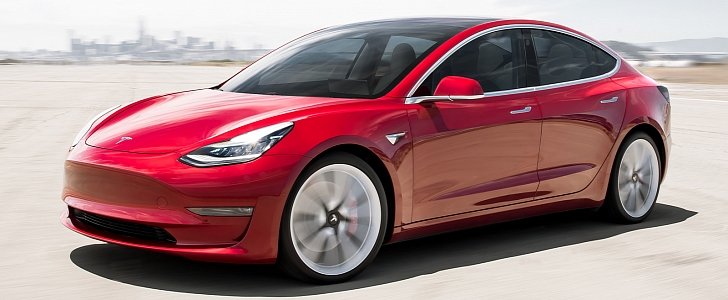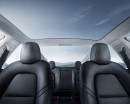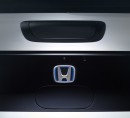Moving cars away from internal combustion engines and bestowing them with tailpipe emissions-free all-electric powertrains wasn’t a move intended to make them more fun to drive.
The only reason why this is nowadays a trend is because governments around the world are forcing automakers to meet increasingly stringent emissions targets, and making electric cars is the most viable way to achieve this.
Many keen drivers are not happy that this is happening, since they enjoy their noisy, fuel-burning machines. Gasoline and diesel cars not only give the keen driver more to do (shifting gears in order to keep the engine in its optimum power band), but because they don’t need a massively heavy battery pack to lug around, they’re lighter and more nimble too.
Electric cars, on the other hand, have at least as much power and torque (often more) than their internal combustion counterparts, yet they have to bare the burden of carrying batteries around - these packs can get really heavy like, for instance, the one that powers the Tesla Model S weighs 540 kg (1,200 pounds) and that has a negative effect on how the car behaves when you show it some corners.
That being said, since most modern electric vehicles have their battery packs mounted very low in the chassis (usually in the passenger compartment floor), this in turn means their center of gravity is equally low. Cars with low centers of gravity are known to be better at cornering than ones that carry more mass higher up, so even if EVs are always heavier than internal combustion-engined cars, they are probably more stable and less prone to rolling.
And yet since they weigh more overall, they carry more inertia into corners and thus won’t feel as agile. Heavier cars also have a tendency to either push wide or become unstable when quickly transferring weight from one side of the car to the other - that’s why SUVs, which are not only tall but also heavier than normal cars, handle worse than normal cars, no matter how hard engineers work to make them feel sporty.
Trying to drive a heavy and top heavy car around a twisty road is like trying to run a slalom while carrying a cauldron full of water on your head - you won’t want to do it again.
All of the above factored in, are there currently any all-electric cars that are fun to drive? By fun to drive I don’t just mean they provide whiplash neck injury-inducing acceleration, because while that is certainly fun, it’s not really what driving enthusiasts seek; they want communicative steering, good chassis balance and generally rewarding handling.
Sure, if the vehicle that has these qualities also has a lot of power, they won’t mind, yet going fast in a straight line is not high on their list of priorities.
BMW’s i3S has to be mentioned here. Sure, it may look like a boxy, top-heavy mini people carrier, yet it’s one of the most entertaining EVs at any price point. Firstly, it is rear-wheel drive, it packs 182 horsepower, its steering is as sharp and direct as you’ve come to expect from BMWs and even though you sit a bit high, it really feels planted and surefooted through the corners.
Plus, thanks to its skinny tires (and the instant torque delivery), you can really have some fun in it.
Another worthy mention in this company is the Tesla Model 3, preferably one with a smaller battery pack and without the front axle motor. That’s because a base Model 3 with the standard pack and no front motor is almost 250 kg (550 pounds) lighter than the dual-motor, long-range model and, through the corners, this matters a lot. American automotive journos have taken the Model 3 on track and they really enjoyed throwing it around - Edmunds compared it to a BMW 330i on track and found the Tesla to be more fun to drive.
The larger Tesla Model S is not bad to drive either, although its lightest version is still some 300 kg (660 pounds) heavier than a comparable Model 3. And this has a negative effect on the way it handles corners - it’s not bad, as Chris Harris discovered when he tried the car out on some twisty U.K. roads, although he still didn’t get out of the car in awe over its handling prowess; maybe the Model S Plaid version will be different.
There is one more car that deserves to be mentioned here and that’s the new Porsche Taycan, the German automaker’s first all-electric vehicle which thankfully isn’t another battery-powered SUV (as is the trend nowadays). The Taycan was engineered from the ground up as a pure EV (albeit on a platform it will share with a future Audi model and others), but according to most of the people who have driven it, it does exhibit that Porsche handling magic that pretty much all the brand’s offerings are renowned for.
If you were looking for a cheap, fun to drive EV, then, well, there isn’t one. The Porsche is probably the EV handling king right now, followed by the Model 3 and i3S. There is one car that has the potential to be a good handler and that’s the Honda e all-electric city car. It’s not out yet, but with a relatively low weight, 150 horsepower and rear-wheel drive (plus the usual EV low center of gravity), it could be good.
Don’t get your hopes up for it just yet, though, as nobody has had the chance to drive one hard.
Many keen drivers are not happy that this is happening, since they enjoy their noisy, fuel-burning machines. Gasoline and diesel cars not only give the keen driver more to do (shifting gears in order to keep the engine in its optimum power band), but because they don’t need a massively heavy battery pack to lug around, they’re lighter and more nimble too.
Electric cars, on the other hand, have at least as much power and torque (often more) than their internal combustion counterparts, yet they have to bare the burden of carrying batteries around - these packs can get really heavy like, for instance, the one that powers the Tesla Model S weighs 540 kg (1,200 pounds) and that has a negative effect on how the car behaves when you show it some corners.
That being said, since most modern electric vehicles have their battery packs mounted very low in the chassis (usually in the passenger compartment floor), this in turn means their center of gravity is equally low. Cars with low centers of gravity are known to be better at cornering than ones that carry more mass higher up, so even if EVs are always heavier than internal combustion-engined cars, they are probably more stable and less prone to rolling.
And yet since they weigh more overall, they carry more inertia into corners and thus won’t feel as agile. Heavier cars also have a tendency to either push wide or become unstable when quickly transferring weight from one side of the car to the other - that’s why SUVs, which are not only tall but also heavier than normal cars, handle worse than normal cars, no matter how hard engineers work to make them feel sporty.
Trying to drive a heavy and top heavy car around a twisty road is like trying to run a slalom while carrying a cauldron full of water on your head - you won’t want to do it again.
All of the above factored in, are there currently any all-electric cars that are fun to drive? By fun to drive I don’t just mean they provide whiplash neck injury-inducing acceleration, because while that is certainly fun, it’s not really what driving enthusiasts seek; they want communicative steering, good chassis balance and generally rewarding handling.
Sure, if the vehicle that has these qualities also has a lot of power, they won’t mind, yet going fast in a straight line is not high on their list of priorities.
BMW’s i3S has to be mentioned here. Sure, it may look like a boxy, top-heavy mini people carrier, yet it’s one of the most entertaining EVs at any price point. Firstly, it is rear-wheel drive, it packs 182 horsepower, its steering is as sharp and direct as you’ve come to expect from BMWs and even though you sit a bit high, it really feels planted and surefooted through the corners.
Plus, thanks to its skinny tires (and the instant torque delivery), you can really have some fun in it.
Another worthy mention in this company is the Tesla Model 3, preferably one with a smaller battery pack and without the front axle motor. That’s because a base Model 3 with the standard pack and no front motor is almost 250 kg (550 pounds) lighter than the dual-motor, long-range model and, through the corners, this matters a lot. American automotive journos have taken the Model 3 on track and they really enjoyed throwing it around - Edmunds compared it to a BMW 330i on track and found the Tesla to be more fun to drive.
The larger Tesla Model S is not bad to drive either, although its lightest version is still some 300 kg (660 pounds) heavier than a comparable Model 3. And this has a negative effect on the way it handles corners - it’s not bad, as Chris Harris discovered when he tried the car out on some twisty U.K. roads, although he still didn’t get out of the car in awe over its handling prowess; maybe the Model S Plaid version will be different.
There is one more car that deserves to be mentioned here and that’s the new Porsche Taycan, the German automaker’s first all-electric vehicle which thankfully isn’t another battery-powered SUV (as is the trend nowadays). The Taycan was engineered from the ground up as a pure EV (albeit on a platform it will share with a future Audi model and others), but according to most of the people who have driven it, it does exhibit that Porsche handling magic that pretty much all the brand’s offerings are renowned for.
If you were looking for a cheap, fun to drive EV, then, well, there isn’t one. The Porsche is probably the EV handling king right now, followed by the Model 3 and i3S. There is one car that has the potential to be a good handler and that’s the Honda e all-electric city car. It’s not out yet, but with a relatively low weight, 150 horsepower and rear-wheel drive (plus the usual EV low center of gravity), it could be good.
Don’t get your hopes up for it just yet, though, as nobody has had the chance to drive one hard.
























































































































































